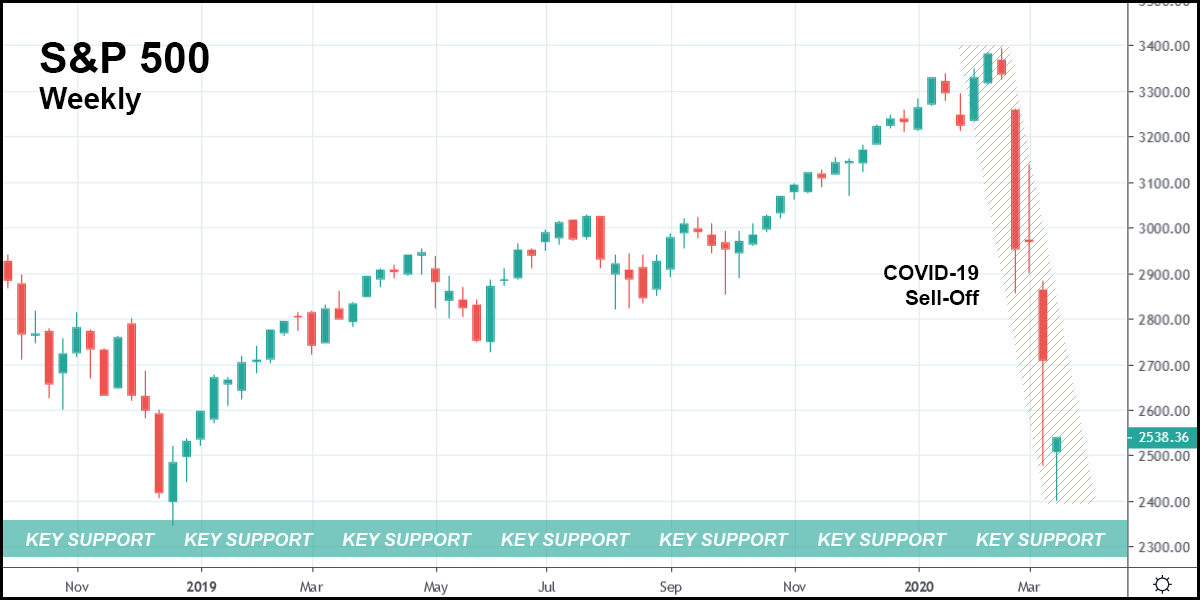The Fed cut rates to zero. A $700 billion quantitative easing (QE) package is on its way.
All-hands (and monetary countermeasures) are officially on deck.
What happens from here is up to us.
That’s a scary proposition for investors that grew up on a consistently rising market. Come hell or high water, the Fed was usually on the market’s side, slashing interest rates at the slightest sign of weakness.
Sometimes even amid record-low unemployment and record-high consumer confidence.
Yes, there were hiccups along the way, but since the financial crisis, the indexes have mostly soared. After the recent drop, the Dow is still up over 200% since March 2009. The Nasdaq Composite, driven by a lengthy tech boom, is up over 400%. The S&P has blasted upwards roughly 240% over that same period.
Now, however, investors are witnessing something they haven’t seen in a very long time:
An impotent central bank.
On Sunday, the Fed “emptied its arsenal” with its historic rate cut. Some analysts view it as confirmation that the current economic expansion will live on.
Others, like Allianz chief economic advisor and ex-PIMCO boss Mohamed El-Erian, believe the Fed’s weekend maneuvers were completely misguided.
“There’s a problem with both what the Fed did and what the Fed did not do. As a result of that […] you saw that clearly in how the futures traded,” El-Erian said this morning, referencing the flailing futures market that went “limit down” on Sunday evening following the Fed’s announcement.
“We should have been more laser-like focused on areas of market failures […] and then followed up with more general interest rate cuts when that can have an impact.”
El-Erian argued that the Fed went “backwards.” Taking the “nuclear option” first, before making surgical cash injections in critical sectors of the economy, was a huge misstep from his perspective.
And in many ways, El-Erian’s right; cheaper loans and lower rates won’t improve consumer spending. Over the last few years, strong consumers (via strong employment) have been the pillar of the U.S. economy.
But that’s not to say the Fed’s actions won’t help. A $700 billion round of QE is massive. Low rates will likely soften the blow of the coronavirus, a true “black swan” event.
However, if the Fed’s emergency maneuvers don’t right the ship soon, stocks could fall even further. Technical analysts have been watching the major indexes for weeks, now, and two of the three (S&P and Nasdaq Composite) are approaching a critical juncture.

In the weekly candlestick chart (in which each bar represents one week of trading), you can see just how close the S&P 500 is to breaching key support at 2346.58. The COVID-19 sell-off, highlighted in red, might find its “bottom” at that level.
If it doesn’t, however, stocks could be in for another free fall in the coming weeks. Nothing thus far indicates, even on the daily candlestick charts, that the market is ready to reverse.
Don’t get me wrong; eventually, equities will head higher. The market has a history of recovering from each downturn.
Often in a spectacular manner.
But until stocks can put together a weekly gain, or at the very least, a few positive trading sessions in a row, a “moonshot” rally won’t happen.
Don’t expect stocks to come roaring back in a single session, though. Plenty of bulls re-entered the market in early March after a big daily gain, only to see their positions get crushed the following week.
“Buying the dip” has failed numerous times since the coronavirus crash began. The Fed’s actions may have paved the way to a recovery, but if it doesn’t materialize on the charts, jumping back in early is simply a fool’s errand.
Because all it takes to send stocks lower will be another piece of particularly bad news – something like a national quarantine or domestic travel ban.
Getting caught in the carnage if that happens is totally avoidable, and for moneywise traders, an easy hurdle to leap.
Provided, of course, that they pay attention to what the market’s price action is telling them.








